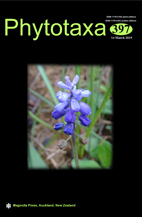Abstract
To identify areas of endemism (AEs) in the Mexican cloud forests based on the distribution of endemic epiphytic bromeliads and orchids species and to propose a hypothesis about the current biogeographical relationship of the Mexican cloud forests. The AEs were identified using 1007 records corresponding to 205 species and the endemicity analysis as is implemented in the ndm/vndm programs. To obtain the consensus areas a strict consensus analysis was carried out considering 60% of shared species as the lower limit; those that presented an Endemicity Index ≥ 3.0 were recognized as AEs. A parsimony analysis of endemicity was performed with winclada/nona programs to infer their biogeographical relationships. Five AEs were recognized: 1) Western Mexico (supported by six species), 2) Southern Mexico (eight species), 3) Northern Gulf of Mexico, and 4) Central Gulf of Mexico (with nine species each), and 5) Northern Oaxaca (four species). The spatial homology hypothesis suggests that the areas of endemism from the Pacific Ocean Slope and from the Gulf of Mexico Slope has a different evolutionary history. Each AEs has a different species composition; the greatest species diversity is presented in the Gulf of Mexico slope AEs, while the greatest diversity of exclusive species is presented in the Pacific Ocean slope AEs. There is no a spatial homology hypothesis between the AEs of the Gulf of Mexico and the AEs of the Pacific Ocean, therefore, our results do not support the hypothesis of a cloud forest with continuous distribution in the past. The divergence times of the bromeliads and orchids and ecological succession theory could explain our results.

